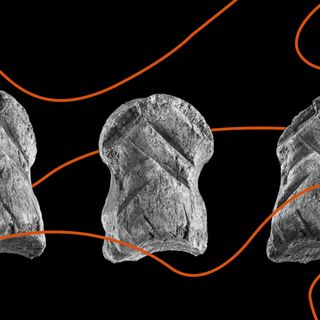Dragonflies have a black, ornate pattern on their wings — “bling” the male species uses to court female dragonflies to mate. But a new study shows the male species in North America is becoming less colorful and losing this pattern as the climate gets hotter.
The “bling” varies among different dragonfly species — these black pigments found in the pattern of their wings help them to identify romantic mates, attract them, and even scare off rivals. Published in PNASthis week, the findings show that the male dragonflies in geographical areas with high temperatures had lesser color on their wings, making them less sexually attractive to the female species.
But female dragonflies didn’t exhibit a similar trend. Moreover, the change in black pigmentation in the dragonflies’ wings could lead to female species not recognizing their male counterparts — ignoring mating calls in the long run.
“There’s this big question in biology about how animals adapting to different climates shapes the diversity of traits in species,” Michael Moore, an evolutionary biologist and postdoctoral research associate at Washington University, who worked on the research, said in a press release. “It turns out, this mating-related trait has these really important consequences…”
The scientists analyzed a database of more than 300 dragonfly species and cross-referenced the color of their wings with information about their climate and location. The comparison helped them identify how the wings of dragonflies from the same species changed depending on hotter or colder climates.
The results showed that the male dragonflies’ wings were more colorful and elaborate in a cooler region. But in warmer temperatures, the male dragonflies were found to respond by evolving — that is, changing the black wing color.
Experts believe the sexual traits in dragonflies may actually be playing a critical role in helping them adapt to the climate crisis. “It seems to be a really consistent way that dragonflies adapt to living in different climates,” Moore said. “That’s really exciting because it’s one of the most consistent evolutionary responses that we see to any kind of environment for any sort of mating-related trait, in any kind of animal.”
In other words, male dragonfly species have a higher chance of survival if they have less bling on their wings.
Related on The Swaddle:
Global Warming Could Drive Polar Bears To Extinction By 2100: Study
At the same time, the higher temperatures “can raise the dragonflies’ body temperature by up to 2°C, leading to damages in their wing tissue, reduced fighting ability, and even death by overheating – so it also affects how some dragonflies react to warmer and warming temperatures,” The Guardian said.
One reason the female species might not change their wing color in hotter areas could be that “females prefer to hide in the shade while males fly in the sunlight,” New Scientist noted.
While the evolution in male dragonflies is notable, scientists note more research is needed to gauge how this “evolution” will affect the survival of the species. It is possible that female dragonflies may no longer identify the male species. Worse, they may even start mating with males from other species by mistake.
“That happens sometimes already, and the offspring don’t do very well, so that would be a pretty detrimental consequence,” Moore said.
In the end, he noted that “it becomes a cost-benefit question.” It is likely they may lose color to adapt to warmer temperatures for survival — but the same process could dampen their chances of mating and survival of another kind.
The research on the evolution of organisms with climate change, and their sexual traits, is just “really scratching the surface at this point,” Moore said. More exploration can perhaps explain the variation in experience among male dragonflies, the immunity enjoyed by female species, and how their mating rituals might change.
“The Earth is going to look substantially [in a 100 years] different and scientists need to try to learn as much as they can about how organisms react, in order to do a better job of managing these populations as the world changes around them,” Moore said.




